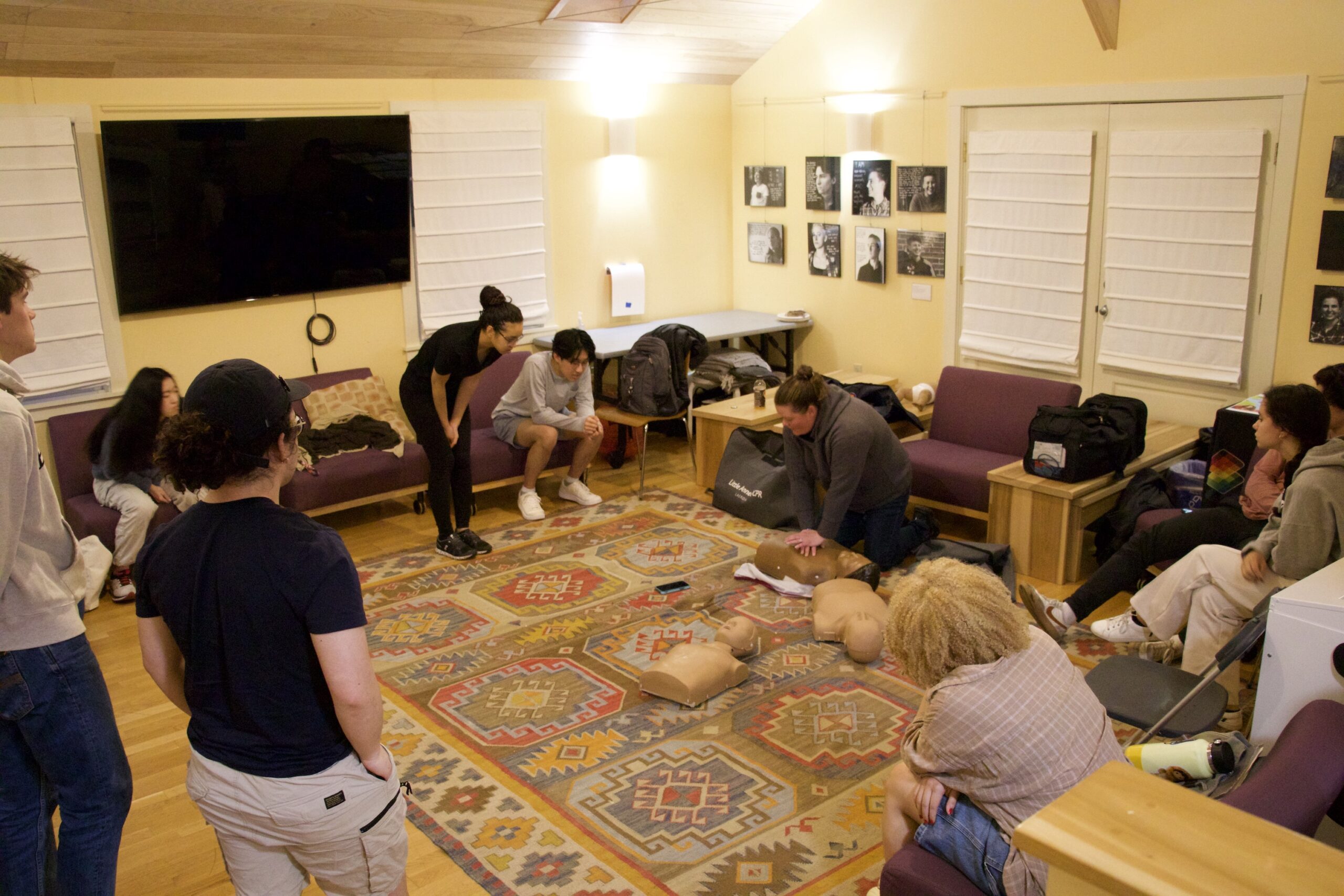BEMC hosts CPR training for students
April 21, 2023
 Andrew Yuan
Andrew YuanThe Bowdoin Emergency Medicine Club (BEMC) hosted a CPR training event on Sunday in the 24 College garage, where students gathered to learn the life-saving skill. The 2-hour event was designed to train students on CPR and clarify any questions they may have had about the practice.
The training was conducted by Ashley Moody, a firefighter and EMT for the Bath Fire and Rescue Department. Moody began the training with an informative presentation on CPR and its effects on the human body. The presentation also covered the use of automated external defibrillators and other measures that should be taken in the event that CPR is needed.
After the overview, participants got hands-on practice using mannequins. Both adult and children mannequins were provided to ensure that participants gained a comprehensive understanding of performing CPR on different age groups. The bulk of the session was dedicated to practice, and Moody provided feedback and guidance to the participants to ensure the chest compressions were done correctly and confidently.
Towards the end of the session, students received additional emergency medical advice on the Heimlich maneuver, allergic reaction response and the proper use of EpiPens and Naloxone.
James Yoo ’25, who attended the training, found the program to be a success and enjoyed the learning experience.
“In terms of learning, I think it was perfect. [Moody] did a really good job of explaining what CPR is and its importance,” Yoo said. “The terminology was a bit confusing. There are terms like ‘profuse’ that I didn’t understand in the beginning, but I felt really comfortable asking questions.”
Despite not being trained in CPR beforehand, Yoo now feels comfortable performing the technique if an emergency arises.
“If there was no actual doctor present, I would be confident enough to take control of a situation that requires that kind of knowledge now,” Yoo said.
Students who participated in the training session met the American Heart Association’s requirements, which means they are CPR certified for the next 2 years.
A founder of the BEMC Henry Somerby ’23 shared that the training event was a part of a larger goal of instilling emergency medical knowledge in the community. This is the second CPR training held by the newly-chartered club, but it was the first open to all students on CampusGroups. The first session was done in collaboration with Peer Health in hopes of training peer educators in CPR.
“When the instructor went around in the beginning and asked why [people are] here, a lot of people said they were here for fun and [to] learn a good skill, but that they also wanted to be able to help a friend in an emergency. That’s a really important sentiment I’m hearing a lot on campus, and we’re trying to speak to that,” Somerby said.
Somerby hopes to continue CPR training through BEMC events while also introducing other beneficial training sessions.
“The goal is to continue to do CPR events. There’s also potential to host a trauma-informed care training session, which is really important, especially when you consider the nature of how trauma affects us all differently and in many ways,” Somerby said.
Somerby noted that another goal for the club is to eventually train students to join emergency response teams in nearby communities. The BEMC currently has around 15 registered EMTs and several other students who have completed similar emergency wilderness or ski patrol training.
“We’re trying to essentially train students so that they can take primary shifts at Harpswell-Neck Fire and Rescue. There’s only around seven EMTs there, and they’re all 70 [years old] and work 70-hour weeks. They’ve reached retirement age and still work an aggressive amount of hours. At some point, the health of the group goes down because the EMTs aren’t able to provide the best care doing something that’s physically taxing like CPR,” Somerby said. “The ultimate goal would be to pair with CXD and host EMT trainings for students.”
Unlike other NESCAC schools, Bowdoin lacks an on-campus emergency response team. Many college-based response teams are student-run; for example, the Hamilton College Emergency Medical Services consists of volunteer student EMTs who rotate on-call shifts to respond to medical emergencies on campus 24/7.
Somerby hopes the efforts of the BEMC will increase student interest and lead to the creation of a student-run emergency response team on campus that could work with Bowdoin Security to deal with medical emergencies.
For now, the club looks forward to operating in Harpswell-Neck as student EMTs and serving the health and safety of the Bowdoin community.

Comments
Before submitting a comment, please review our comment policy. Some key points from the policy: